Learn about the best parsley companion plants to help this useful biennial plant thrive. What do I mean by a biennial plant? I give the details about that further on down. Learn about the best companion plants you can surround your parsley with, including the best flowers to use as companion plants for parsley, the best fruit to plant with parsley, the best herbs to plant with parsley, and the best vegetables to plant with parsley. Also get ideas about which plants to avoid planting near parsley. You will also learn about the best time to plant parsley, the best place to plant parsley, the best fertilizer for parsley, and the watering needs of parsley.
Table of Contents
Why I Love Parsley
I’ve been using parsley in recipes for decades, adding it to main dishes like homemade broccoli cheese sauce, savory bacon-wrapped meatloaf or appetizers like smoked salmon cheese ball. If you are looking for an easy-to-grow addition to your plant collection, read on to learn how simple it is to grow parsley in your garden. Bonus: As a biennial, parsley will stick around for two seasons in most garden zones. Similar to foxglove, second year parsley blooms and sets seeds. Learn about planting, growing, and harvesting parsley, plus get a handy printable chart listing companion plants for parsley as well. Let’s get started!
What Makes a Good Companion Plant?
Why pay attention to companion plants? A good companion plant is one that offers various benefits to its neighboring plants, such as minimizing pest and disease issues, which helps enhance their growth, health, and overall productivity. Here are some key qualities that make a good companion plant that will help you plant strategically to make the most of your yard or garden space:
Pest Control: Companion plants may repel pests or attract beneficial insects that prey on pests, helping to reduce pest damage without the need for chemical pesticides.
Pollinator Attraction: Plants that attract pollinators such as bees, butterflies, and hummingbirds can improve pollination and fruit set in neighboring plants, leading to higher yields.
Soil Improvement: Some companion plants have deep roots that help break up compacted soil, while others fix nitrogen or add organic matter to the soil, improving soil fertility and structure for neighboring plants.
Complementary Growth Habits: Companion plants with different growth habits, such as tall plants providing shade for shorter ones or ground covers suppressing weeds, can maximize space and resources in the garden.
Disease Resistance: Certain companion plants may emit chemicals or compounds that inhibit the growth of pathogens or pests, reducing the risk of disease in neighboring plants.
Seasonal Considerations: Companion plants that thrive during different seasons can provide continuous benefits throughout the year, such as early bloomers attracting pollinators or cover crops protecting soil during the off-season.
Aesthetic Value: Companion plants with attractive foliage, flowers, or fruits can enhance the visual appeal of the garden while providing practical benefits to neighboring plants.
Parsley Companion Plants: Flowers
Here are some companion annual flowers for parsley, along with reasons why each is beneficial:
Alyssum: Known for its sweet fragrance, it attracts pollinators and beneficial insects while adding aesthetic appeal.
Calendula: Attracts beneficial insects like ladybugs and lacewings, which prey on parsley pests.
Cosmos: Attracts beneficial insects and adds height and visual interest to the garden bed.
Marigolds: They repel harmful nematodes in the soil, protecting parsley roots.
Nasturtiums: They deter pests such as aphids, whiteflies, and cucumber beetles while attracting pollinators.
Zinnias: Attracts butterflies and other pollinators, contributing to a healthy ecosystem around parsley plants.
Parsley Companion Plants: Fruit
Here are some companion fruits for parsley, along with reasons why each is beneficial:
Apples: Parsley attracts hoverflies, which prey on apple aphids and other pests, thus aiding in apple tree health.
Blueberries: Parsley’s aromatic foliage may help deter pests, while blueberries provide acidic soil conditions that parsley prefers.
Citrus Trees (e.g., lemon, lime): Parsley attracts beneficial insects that can help control pests on citrus trees, while citrus trees provide shade for parsley.
Figs: Parsley can attract beneficial insects that prey on fig pests, while fig trees provide a semi-shaded environment suitable for parsley growth.
Grapes: Parsley’s aromatic qualities may help repel pests from grapevines, while both plants can coexist in similar soil and light conditions.
Peaches: Parsley’s aromatic compounds may help deter pests from peaches, while both can benefit from similar soil conditions and watering schedules.
Plums: Parsley can attract beneficial insects that control plum pests, contributing to overall orchard health.
Raspberries: Parsley’s deep root system can help improve soil structure, while raspberries provide a natural trellis for parsley to grow alongside.
Strawberries: Parsley can act as a ground cover, suppressing weeds around strawberry plants, and both can thrive in similar soil conditions.
Parsley Companion Plants: Herbs
Here are some companion herbs for parsley, along with reasons why each is beneficial:
Basil: Basil and parsley are mutually beneficial as they both repel pests like mosquitoes and aphids when planted together.
Chives: Chives deter pests such as aphids and carrot flies, while parsley can attract beneficial insects like hoverflies that prey on chive pests.
Lemon balm: Lemon balm’s citrus scent can deter pests like mosquitoes and aphids, contributing to a healthier environment for parsley growth.
Thyme: Thyme is a natural insect repellent that can help protect parsley from pests while adding flavor to dishes when harvested together.
Parsley Companion Plants: Vegetables
Here are some companion vegetables for parsley, along with reasons why each is beneficial:
Beans: Parsley’s deep root system can help improve soil aeration and nutrient uptake for beans, while beans provide nitrogen-fixing benefits to the soil, benefiting parsley growth.
Broccoli: Parsley attracts beneficial insects like parasitic wasps, which prey on pests harmful to broccoli plants, such as cabbage worms.
Carrots: Parsley can improve the flavor of carrots when grown together, and its strong scent can deter carrot flies.
Cucumbers: Parsley can help repel cucumber beetles and other pests, while cucumbers provide a climbing structure for parsley to grow alongside.
Lettuce: Parsley can act as a natural pest repellent for lettuce, while lettuce provides a low-growing companion that doesn’t compete for space.
Onions: Parsley helps repel onion flies and other pests that attack onions, while onions can enhance the flavor of dishes when paired with parsley.
Peppers: Parsley attracts beneficial insects that prey on pests harmful to pepper plants, such as aphids and spider mites.
Radishes: Parsley can help repel flea beetles that attack radishes, while radishes act as a natural barrier crop for parsley, deterring certain pests.
Spinach: Parsley’s deep root system can help improve soil structure for spinach, while spinach provides a leafy green companion that thrives in similar conditions.
Tomatoes: Parsley helps repel tomato hornworms, while tomatoes provide shade for parsley during hot periods.
What Not to Plant Near Parsley
While parsley is a versatile and beneficial herb in the garden, there are a few plants that are not ideal companions. Here are some plants that should not be planted with parsley:
Anise: Similar to fennel, anise also produces chemicals that inhibit the growth of nearby plants, including parsley.
Coriander (Cilantro): While they are the same plant species, coriander refers to the seeds, and cilantro refers to the leaves. Planting them together can lead to cross-pollination, affecting the flavor of both herbs.
Dill: While some gardeners advocate for planting dill alongside parsley, others suggest keeping them separate as they can compete for resources and may cross-pollinate if allowed to flower simultaneously.
Fennel: Fennel can inhibit the growth of parsley and other plants due to its allelopathic properties, which can stunt their growth.
Mint: Mint can be aggressive and may compete with parsley for space, water, and nutrients.
Oregano: Oregano can be aggressive and may outcompete parsley for space and resources if planted too close together.
Rosemary: Rosemary can inhibit the growth of parsley due to its allelopathic properties and may also compete for resources in the garden.
Sage: Sage can inhibit the growth of parsley due to its allelopathic properties and may also compete for resources in the garden.
Parsley Companion Planting Chart
| Parsley Companion Plants | |
| Parsley Companion Plants: Flowers | Parsley Companion Plants: Fruit |
| Alyssum | Apples |
| Calendula | Blueberries |
| Cosmos | Figs |
| Marigolds | Grapes |
| Nasturtiums | Lemons |
| Zinnias | Limes |
| Peaches | |
| Parsley Companion Plants: Herbs | Plums |
| Basil | Raspberries |
| Chives | Strawberries |
| Lemon balm | |
| Thyme | Parsley Companion Plants: Vegetables |
| Beans | |
| Worst Parsley Companion Plants | Broccoli |
| Anise | Carrots |
| Cilantro (Coriander) | Cucumbers |
| Dill | Lettuce |
| Fennel | Onions |
| Mint | Peppers |
| Oregano | Radishes |
| Rosemary | Spinach |
| Sage | Tomatoes |
Parsley Planting and Growing Tips
When to Plant Parsley
Since I live in USDA plant hardiness zone 8 ( you can find our zone here), I can actually plant parsley in the spring and the fall. Here are the guidelines for both spring and fall planting of parsley, and these guidelines are appropriate for USDA plant hardiness zone 7 as well:
For spring planting: Start planting parsley outdoors in early to mid-spring, after the last frost date has passed. Soil temperatures should be around 50°F (10°C) or higher for optimal germination. You can also start parsley indoors from seeds about 6 to 8 weeks before the last frost date and then transplant the seedlings outdoors once they are well-established.
For fall planting: In Zone 8, fall is an excellent time to plant parsley as the cooler temperatures are ideal for germination and growth. Aim to plant parsley in late summer or early fall, about 6 to 8 weeks before the first expected frost date. This allows the parsley to establish before the colder weather sets in, and it will continue to grow throughout the fall and into the winter months.
Guidelines for planting parsley in the colder USDA plant hardiness zones 3-6 are as follows: Plant parsley in the spring after the last frost date has passed. In colder climates, parsley is typically grown as an annual herb.
For warmer zones 9-11, here are the guidelines: Parsley can be planted in the fall for winter harvest or in the spring for a longer growing season. In these zones, parsley may behave as a biennial or even a short-lived perennial, surviving through mild winters.
Where is the Best Place to Plant Parsley?
The best place to plant parsley is in a location that receives partial to full sunlight, ideally getting at least 4-6 hours of sunlight per day. Parsley prefers well-drained soil that is rich in organic matter, with a pH level between 6.0 and 7.0. It’s important to choose a spot with good air circulation to prevent diseases, and avoid planting it in areas prone to strong winds or frost pockets. Additionally, parsley can be grown in containers or raised beds if garden space is limited, as long as they receive adequate sunlight and moisture. If you want to keep the parsley around for a second year, plant the parsley in an area that will not get tilled up at the beginning of the next growing season. I like to put some in the vegetable garden as an annual and some in the zone 8 perennial garden to grow back and produce seed the next year.
What is the Best Fertilizer for Parsley?
The best fertilizer for parsley is a balanced, organic fertilizer with equal parts nitrogen, phosphorus, and potassium (N-P-K). Look for fertilizers labeled as “all-purpose” or “vegetable fertilizer” (the one I use) with an N-P-K ratio of around 10-10-10 or similar. Organic options such as compost, well-rotted manure, or fish emulsion are also excellent choices as they provide essential nutrients while improving soil structure and promoting microbial activity. When fertilizing parsley, apply the fertilizer sparingly and avoid over-fertilizing, as this can lead to excessive foliage growth with reduced flavor intensity.
How Much Water Does Parsley Need?
Parsley prefers consistently moist soil but does not like to be waterlogged. Water parsley deeply whenever the top inch of soil feels dry to the touch, typically about once or twice a week, depending on the weather conditions and soil drainage. Provide enough water to moisten the soil to a depth of 6-8 inches. It’s important to water the soil directly at the base of the plant to avoid wetting the foliage, which can lead to fungal diseases. Additionally, mulching around parsley plants can help retain soil moisture and reduce the frequency of watering. Adjust watering frequency based on environmental conditions such as temperature and rainfall.
Varieties of Parsley and Their Uses
There are several varieties of parsley, each with its own distinct flavor and culinary uses. Here are some common varieties of parsley and their typical uses:
Curly Leaf Parsley (Petroselinum crispum var. crispum): This is the most common type of parsley with tightly curled, dark green leaves. It’s often used as a garnish due to its decorative appearance. Curly leaf parsley also adds flavor and freshness to salads, soups, stews, and sauces.
Flat Leaf Parsley (Petroselinum crispum var. neapolitanum): Also known as Italian parsley or flat-leaf Italian parsley. It has flat, serrated leaves and a stronger flavor compared to curly leaf parsley. Flat leaf parsley is preferred for cooking as it holds up well to heat and has a more robust flavor. It’s commonly used in Mediterranean, Middle Eastern, and European cuisines, particularly in dishes like tabbouleh, pasta sauces, marinades, and herb blends.
Hamburg Parsley (Petroselinum crispum var. tuberosum): Also known as root parsley or turnip-rooted parsley. Hamburg parsley has a thick, edible root that resembles a small parsnip or turnip. The root has a mild, sweet flavor and is often used in soups, stews, and casseroles, or roasted as a vegetable. The leaves of Hamburg parsley can also be used in cooking, similar to flat-leaf parsley.
Japanese Parsley (Cryptotaenia japonica): Also known as mitsuba or Japanese wild parsley. Mitsuba has flat, serrated leaves similar in appearance to flat-leaf parsley but with a slightly different flavor profile. It has a unique taste with hints of celery, parsley, and cilantro. Mitsuba is commonly used in Japanese cuisine as a garnish for sushi, salads, and noodle dishes, or as an ingredient in soups and stews.
Harvesting Parsley
Parsley may be harvested and used fresh as a garnish or part of a recipe. It may also be harvested and dried. Fresh parsley tends to have a milder flavor compared to dried parsley, so you may need to adjust the amount to suit your taste. The general rule of thumb is that 1 tablespoon of fresh parsley is roughly equivalent to 1 teaspoon of dried parsley. So, if you need 1 tablespoon of dried parsley, you would use about 3 tablespoons of fresh parsley.
If you wish to dry your parsley, you can either use a food dryer (dehydrator) or an oven. I am fortunate to have a food dehydrator, which I enjoy using to dry garden produce. Here are the simple steps to drying parsley in a food dryer:
Harvest and Wash: Start by harvesting fresh parsley from your garden or purchasing it from the store. Wash the parsley under cold water to remove any dirt or debris.
Prepare the Leaves: Remove the parsley leaves from the stems, discarding any yellowed or damaged leaves. Try to keep the leaves as whole as possible, as smaller pieces may dry out too quickly or become brittle.
Preheat the Dehydrator: Preheat your food dehydrator according to the manufacturer’s instructions. Most food dehydrators (mine included) have temperature settings between 95°F and 125°F (35°C and 52°C), which is ideal for drying herbs.
Arrange on Trays: Arrange the parsley leaves in a single layer on the trays of the food dehydrator. Make sure there is some space between the leaves to allow for air circulation.
Dry: Place the trays in the food dehydrator and set the timer according to the manufacturer’s instructions. Drying parsley typically takes between 1 to 4 hours, depending on the humidity levels and thickness of the leaves. Check the parsley periodically to ensure it is drying evenly.
Check for Dryness: To test if the parsley is dry, remove a leaf from the dehydrator and allow it to cool for a few seconds. If the leaf crumbles easily between your fingers, it is dry and ready to be stored. If it feels leathery or retains moisture, continue drying for another hour and test again.
Cool and Store: Once the parsley is completely dry, remove it from the dehydrator and allow it to cool to room temperature. Store the dried parsley in an airtight container, away from light and moisture, to maintain its flavor and freshness. I often store home dried produce in the freezer to make sure it retains its quality.
No food dryer? No problem! Here’s how to dry parsley in an oven:
Preheat the Oven: Preheat your oven to its lowest setting. This is typically (as is mine) around 170°F (75°C), but some ovens may have a “warm” setting that’s even lower.
Prepare the Parsley: Wash the parsley under cold water to remove any dirt or debris. Pat the leaves dry with a clean kitchen towel or paper towels. Remove the leaves from the stems and discard any yellowed or damaged leaves.
Arrange on Baking Sheets: Line baking sheets with parchment paper or silicone baking mats. Arrange the parsley leaves in a single layer on the baking sheets, making sure there is some space between the leaves to allow for air circulation.
Dry in the Oven: Place the baking sheets in the preheated oven and prop the oven door open slightly to allow moisture to escape. This helps prevent the parsley from steaming instead of drying. Depending on the thickness of the leaves and the humidity levels, drying parsley in the oven can take anywhere from 1 to 3 hours.
Check for Dryness: After about an hour, check the parsley to see if it’s drying evenly. Rotate the baking sheets if necessary to ensure even drying. Continue drying until the parsley leaves are crisp and crumble easily between your fingers.
Cool and Store: Once the parsley is completely dry, remove it from the oven and allow it to cool to room temperature. Once cooled, store the dried parsley in an airtight container, just as you would with the parsley dried in the food dryer.
Need More Planting Ideas?
Check out the tips for the best companion plants for eggplant to learn what to grow with those beauties. If you like the idea of companion planting, you might be interested in reading about the best companion plants for pumpkins, sunflowers, garlic, asparagus, rosemary, radishes, beetroot (beets), thyme, lupine, borage, stevia, or the best companion plants for lavender. Get tips for growing stunning dahlias. Are you a beginning gardener? Try planting some foolproof, easy-care perennials, or learning about the best companion plants for columbine. There are so many exciting plants to grow!
Keep Track of Your Garden with a Journal Logbook
Now that you have learned about some compatible companion plants, keep track of your planting ideas, goals, and plans with a printable, editable free garden journal logbook. Choose the pages you want to use and customize them as you wish to record monthly, weekly, and daily garden tasks, lists, weather, and planting arrangements. There are also grid pages for easily designing the layout of your vegetable garden, flower garden, or landscape. Print it out and put it into a notebook you can take with you to the garden (that’s what I do). It’s nice to have all of your garden information in one place.
Get the garden journal logbook!
Free Online Garden Planner Layout Template
Now that you know which are the best companion plants for parsley, you might need a way to plan your garden layout. Whether you are planting vegetables, flowers, or herbs near your parsley plants, this online garden planner can help you visualize your design and bring it to life. Arrange and rearrange the plants over and over, then print the layout when you are satisfied. With garden tasks that need your attention, this is one way to save time.
It’s fully customizable when you make your own copy and includes two editable chart pages for noting planting specifications.
Get my free online garden layout planner template!
Have a wonderful week, and may all of your parsley-growing endeavors meet with success!

Lisa Mitchell is a wife, mom, and school librarian who likes to grow fruit, herbs, vegetables, and flowers on her family’s small Pacific Northwest farm. To learn more about what this website has to offer gardeners, click on over to the Garden page.
Want more great garden, food, or travel ideas? Follow FluxingWell on Pinterest, Facebook, Instagram, and X for the latest posts, tips, and inspiration.


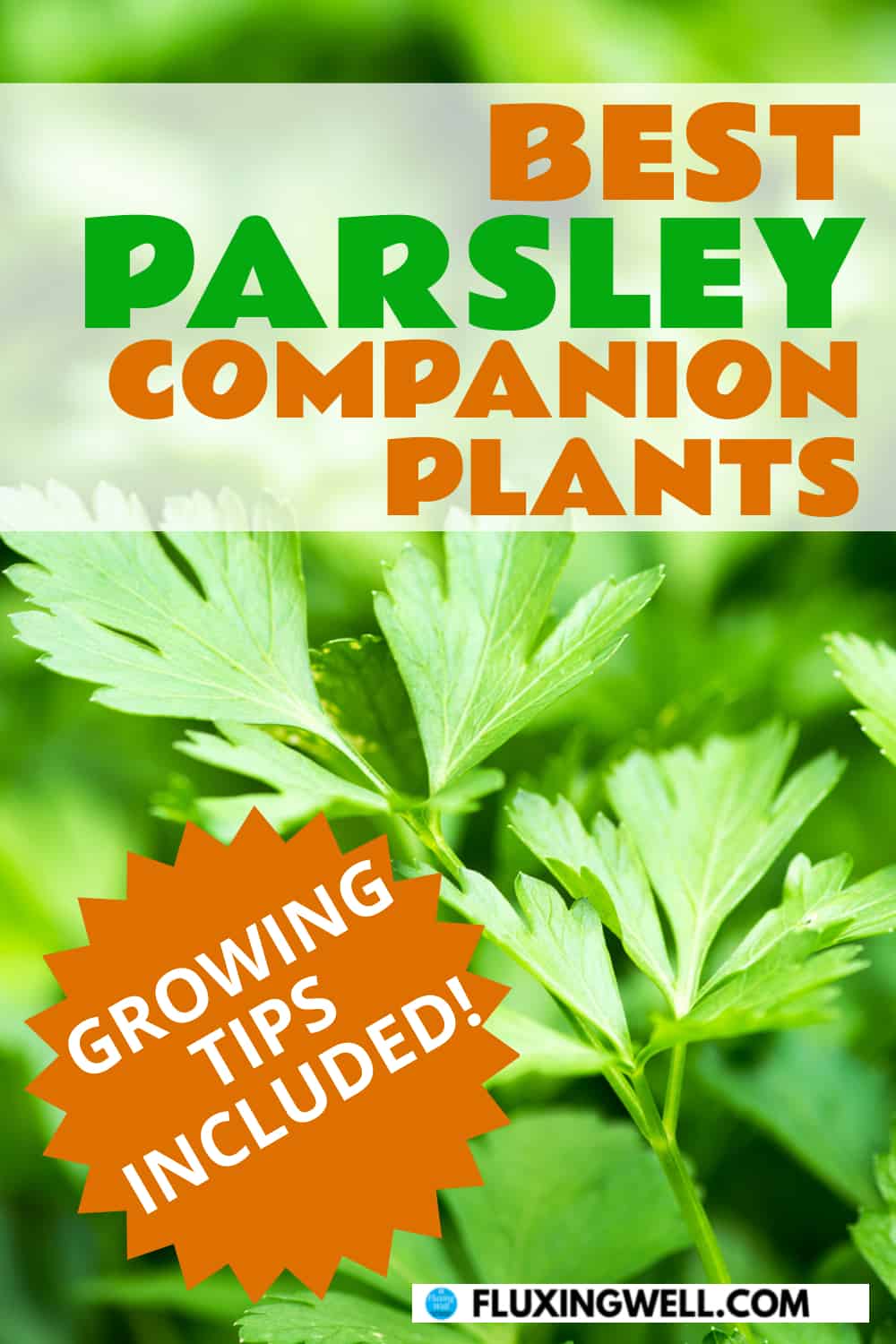
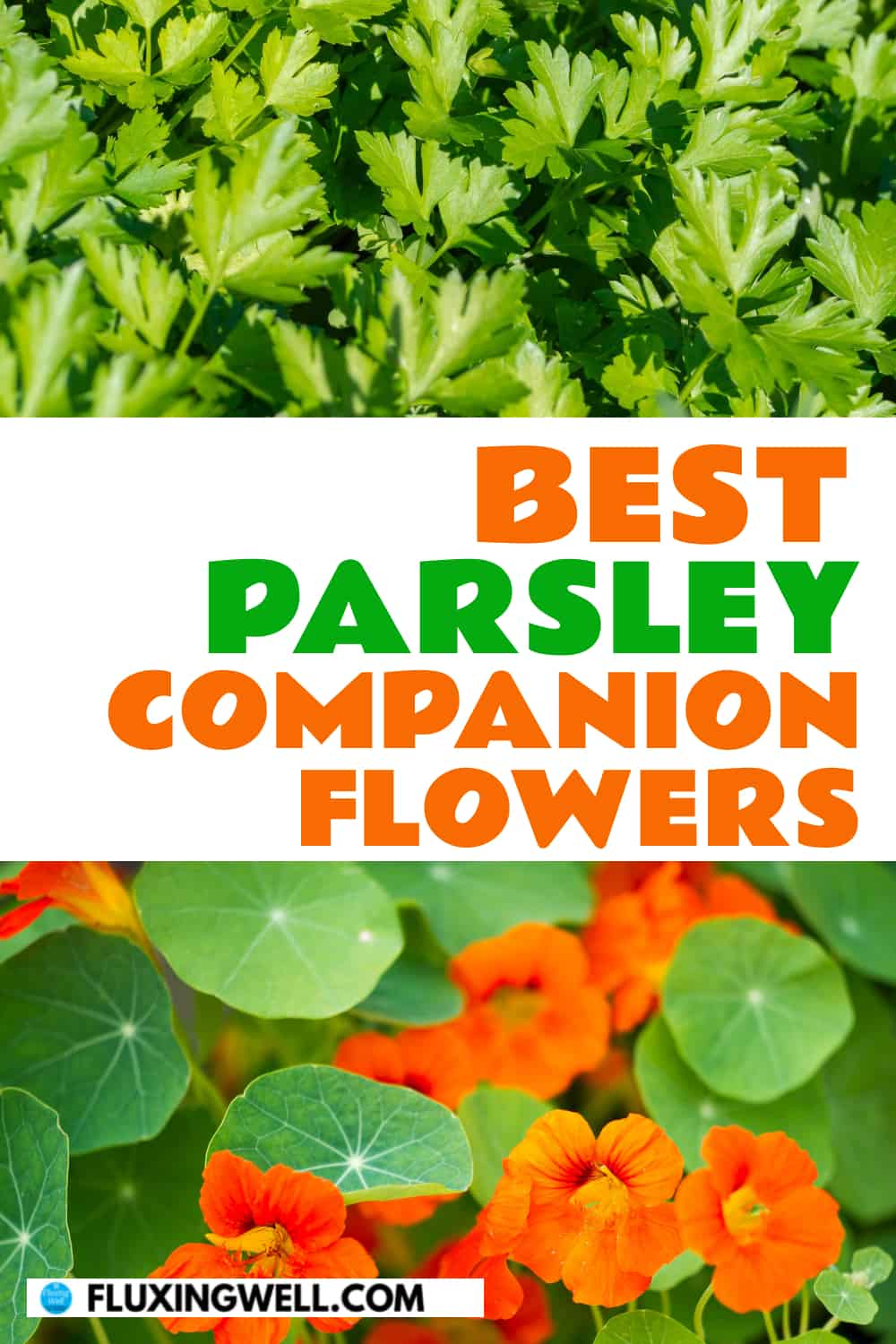
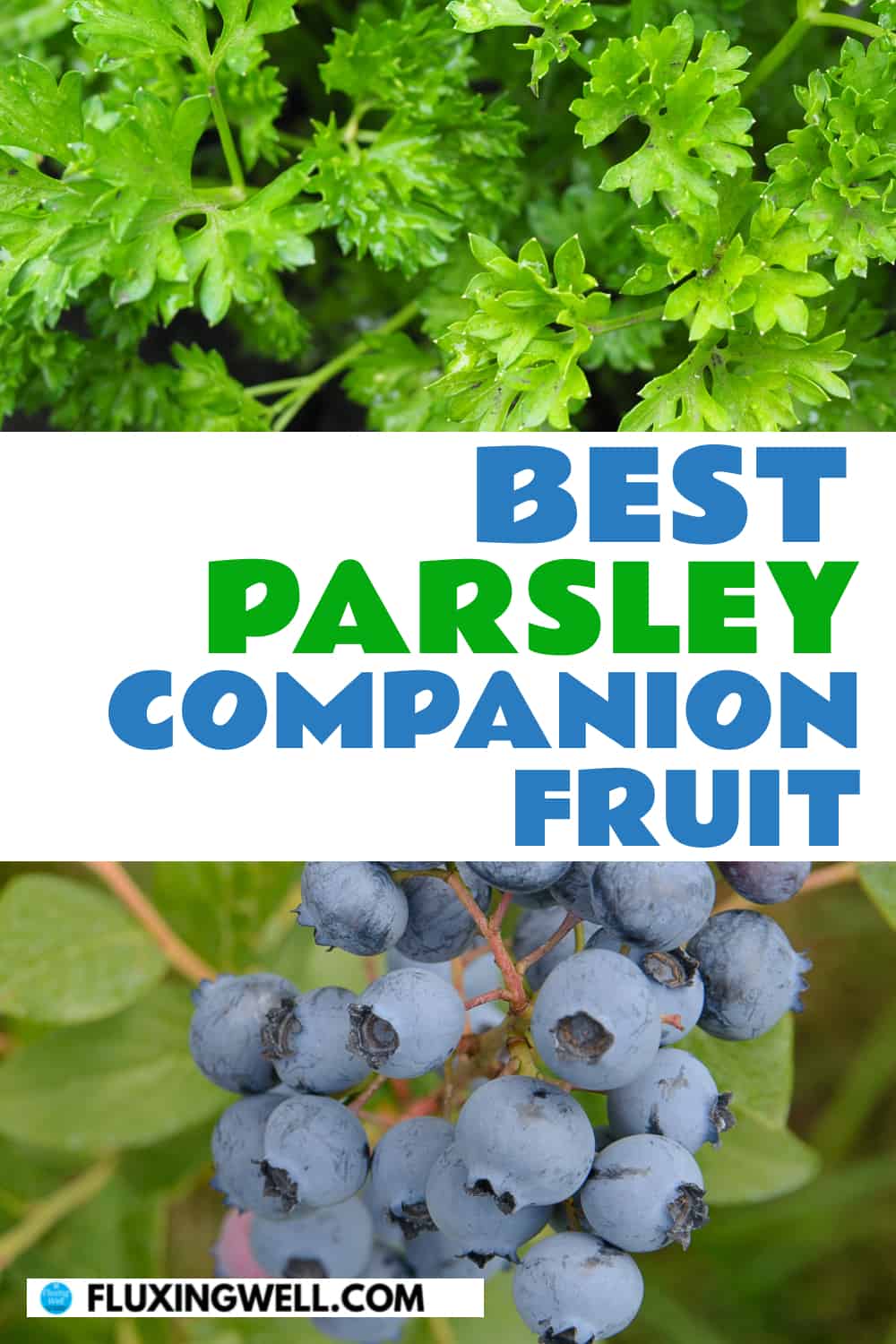


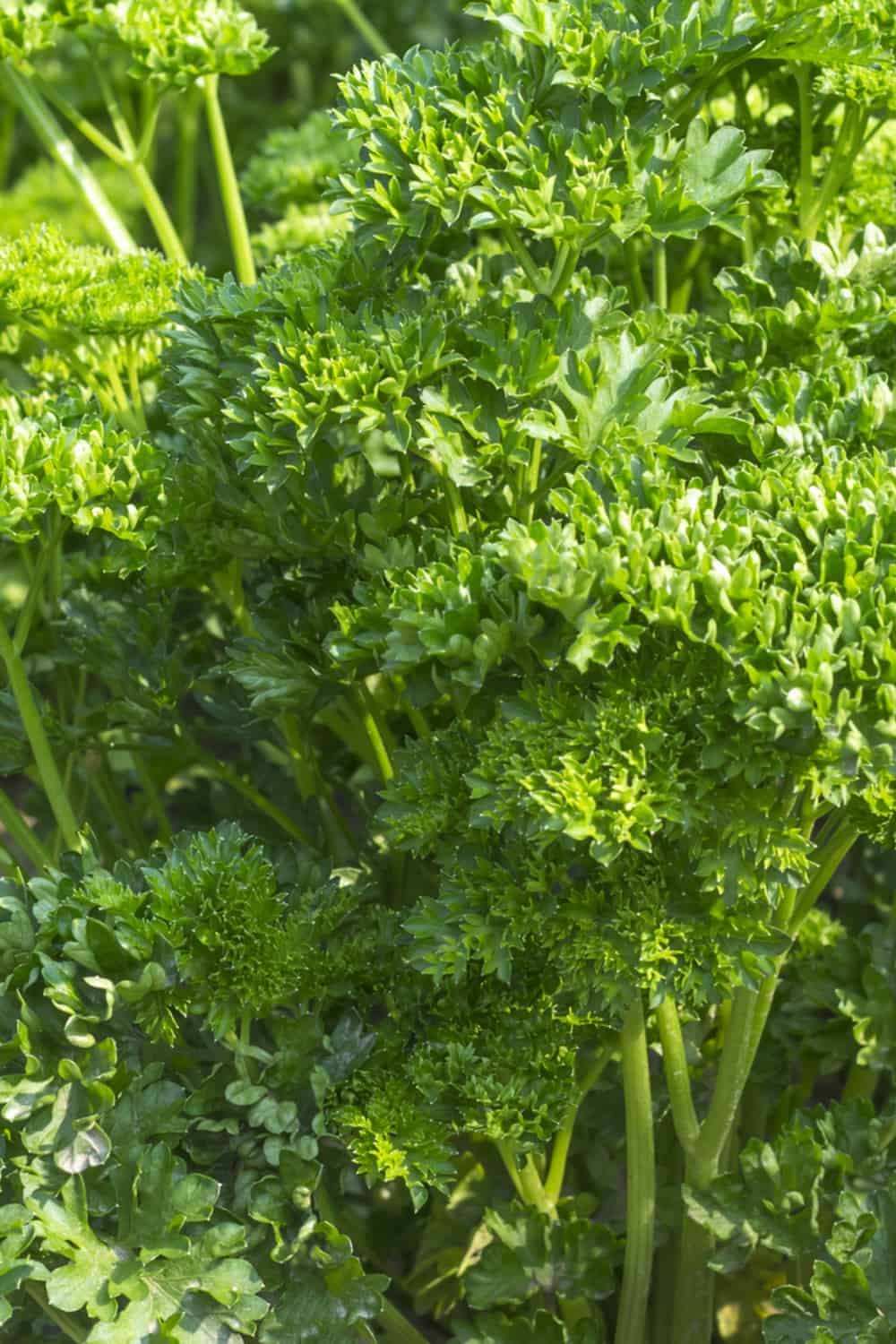

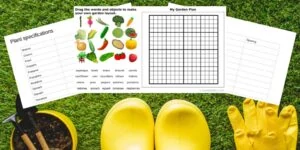
I never knew there were so many different types of parsley! This is so helpful, thanks for the parsley companion plants list! Very informative.
You are most welcome. Yes, there are many varieties of parsley that make great companion plants.
These are great tips on the best parsley companion plants. Thank you for the great growing tips and the free chart that is also included. It’s great that the parsley is biennial, and will stick around for two seasons in most garden zones.
That is definitely a bonus. Glad you liked the post about parsley companion plants.
This comprehensive guide on parsley companion planting with a curated list of 30 beneficial companion plants and insights on which ones to avoid is a treasure trove of gardening wisdom. Thanks for the ideas!
You are very welcome. I hope you get to grow some parsley in your garden.
Thank you for these excellent ideas about companion plants for parsley. Parsley is so useful. I’ll get those parsley companion plants and use your ideas to plan my garden layout.
I am so glad you found the parsley companion planting tips helpful. Happy gardening!